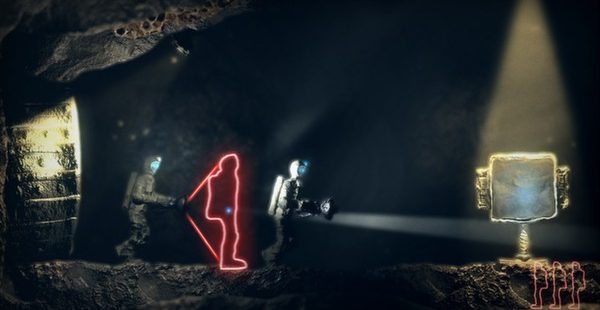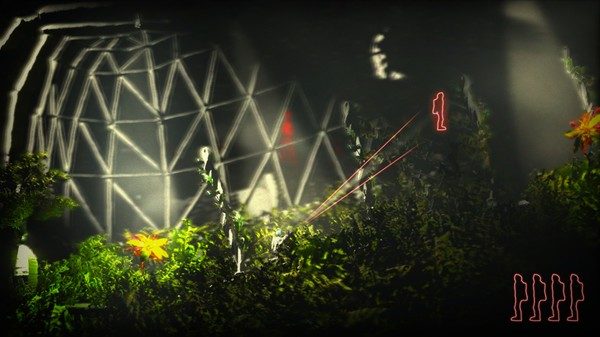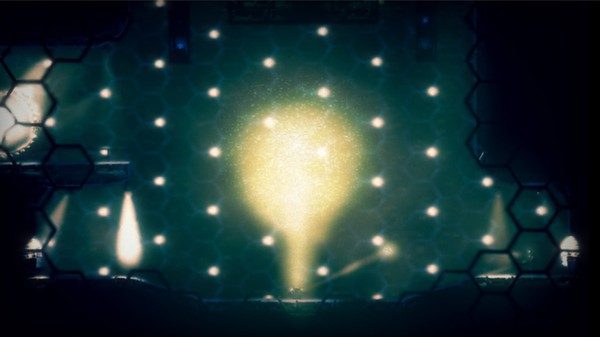
Me, Myself, and my Clone
Johan Blomberg’s mind is wandering in a derelict space station.
About 20 years ago, scientists successfully cloned a sheep. That first clone, Dolly, sparked heated controversies about the ethics of scientific progress, and the line between experimentation and playing god. Today, things have calmed down to the extent that those with a lot of money, and perhaps an unhealthy separation anxiety, can clone their deceased dog. Since we can clone dogs and sheep, it should be possible to clone human beings. Even as just a purely theoretical possibility, all sorts of questions come to mind. Let’s say a cloned person commits a crime, how do we know which version to put behind bars? What if we cloned Adolf Hitler? Even though the clone is not to blame, he might still be held culpable for the terrors of his predecessor. At issue is the difference between two persons that look and behave in the exact same way. There might not be much distinction from an outside perspective. But if we look at it from the perspective of being one among several identical copies, there seems to be a decisive difference. Simply put, if there were someone that looked and behaved exactly like me, I might not be willing to accept that we were the same person.
The concerns raised by cloning relate to age-old philosophical discussions about our physical bodies and the self. What is the nature of the human mind, and how is it related to the body? To give a much-abbreviated version of a discussion that’s been going around for centuries, there are two different aspects that seem difficult to reconcile with one another. On the one hand, it’s quite obvious that we require a brain and a body to think in the first place. This might then mean that two identical brains would have identical minds – in other words, there would not be any difference between a clone and the cloned. If they are one and the same, then it might not even matter if one lives and the other one dies. One of them can just pick up where the other left off and it would be business as usual. On the other hand, there is something unique in being the exact person you are. A person’s identity does not really seem possible to completely duplicate or clone.
With the exception of offering a narrative justification for saving (like Bioshock’s checkpoints dressed up as the cloning chambers, where the player character’s biodata is stored), cloning is a theme seldom pursued in videogames. We could however say that we encounter clones all the time in videogames. Every time the avatar dies, the player assumes control of a new but otherwise identical version of the same character. And what would these different but identical instances be if not clones? Facepalm’s 2013 puzzle-platformer The Swapper manages to integrate the philosophical questions voiced by cloning technologies with a set of mechanics centered on creating clones and swapping control between them. The game is set on a derelict research station in space, with the research crew missing and presumably dead. To make a long story short (though not free from spoilers), logs scattered throughout the station reveal that the researchers discovered a possibly intelligent alien life-form in the form of complex rock formations. In line with the classical sci-fi trope of what happens when discovering an extraterrestrial intelligence, the human thirst for knowledge is also our inevitable fall. Prior to the disappearance, research on the rock formations led to the development of a device for creating clones and “swapping” consciousness from clone to clone. This technique was made manifest in the “The Swapper Device,” a hand-held tool for creating clones and swapping consciousness from one body to the other.
The scientists must have made the device deviously easy to use, because a scavenger arriving to the derelict station creates a clone of herself completely by mistake. At the sight of her replica, she freaks out and, in homage to Tarkovskij’s adaptation of Solaris, ejects the clone together with the device straight into space. This newly born clone is the protagonist of The Swapper, who is tasked with solving environmental puzzles by using the device. Up to four clones can be created at the same time, where the player controls one and the remaining three mimic, unless hindered by the environment, the movements of the player-controlled clone.

Progressing through the game leads to learning more about the fate of the research station. With the swapping technology in humanity’s hands, the scientists ponder what duplicating a person’s body and moving the mind means for personhood. We get a glimpse at their discussions through logs featuring two scientists, named Dennett and Chalmers. They debate the scientific, philosophical, and ethical questions raised by their discovery: Does the mind really swap place from one body to another? And if my mind can actually move from one body to another, does that mean my brain is incidental to my identity? How are notions like self and person affected by swapping? Apart from the logs, Dennett and Chalmers also appear briefly as two talking brains in test-tubes. Even in this bodiless state, they keep fighting over what their discovery implies – as when Chalmers charges Dennett with completely mistaken in identifying the mind with the brain. Their appearance as brains in test-tubes is a direct reference to the solipsistic brains in a vat argument, which is just one of many minor references to philosophy in the game. Similar to the scenario of The Matrix, a story about human minds being tricked into believing they live in a detailed world, this argument proposes that we cannot rule out that we live in a simulated reality.
The names of the two scientists are by no means an accident. Their real-world namesakes are two influential contemporary philosophers with radically different views on the human mind: Daniel Dennett and David Chalmers. The in-game scientists represent the respective philosophers’ views in a world where cloning and swapping have become reality (with the caveat that Dennett and Chalmers have not, to my knowledge, voiced opinions specifically on cloning technology). They represent two polar opposites on the self and the mind, often referred to as the materialist and dualist positions. Once again with the risk of overly simplifying things, these two positions state that the mind is either made solely out of matter, or there is both mind and matter.
In their discussions, we see that cloning fascinates The Swapper’s Chalmers. She wants to study the effects of swapping in more detail, even though extensive exposure induces side effects like nausea and memory loss that eventually lead to a ban on continued research. Chalmers circumvents the ban by experimenting with mind-swapping on terminally ill persons. She interprets the positive results of her tests as evidence that consciousness can truly move from one body to the next. In one of the logs, Chalmers describes what she senses when using the device to swap to another body. As she finds herself in a different body at a different place and with different capacities, something still remains the same: the undeniable sense of still being herself.
This view of the mind as somehow movable between bodies, and thereby distinct from any particular brain is inspired by David Chalmers. He argues that there are “easy problems” like perceptual attention or the ability to discriminate and integrate information, which in principle can be answered by learning more about the how the brain functions. However, even if we can scientifically explain these processes, Chalmers argues that there is something that evades even science. What it is like for someone to, say, beat a boss in Bloodborne cannot be explained by appeal to what happens in the brain. A not very specific scientific explanation could look something like “what is actually happening when you take pleasure in beating Vicar Amelia is that these electrochemical reactions occur in your brain”. But even if the processes were described with minute detail, it would not give away the subjective character of experiencing Bloodborne. In “Facing Up to the Problem of Consciousness,” this is what Chalmers calls “the hard problem.” The central question of this problem is why there’s a mental life in the first place: “why should physical processing give rise to a rich inner life at all? It seems objectively unreasonable that it should, and yet it does.” Going back to The Swapper, we can now better understand Chalmers’s passion for the swapper device: it is the conclusive piece of evidence that the individual mind is not bound to its body.

Dennett, on the other hand, condemns the swapper device as a scientific, philosophical, and ethical abomination. Where a clone for Chalmers is a body without a mind, Dennett is not so sure. She refuses to believe in a mind separate from the brain, which makes swapping all the more hazardous an enterprise. Just as with Chalmers, there is a connection to the views of the real Dennett – a life-long opposition to speaking and theorizing about the mind as something ineffable and immaterial. There are no hard problems because there really is nothing which distinguishes me from a clone (or what philosophers usually call zombies, not to be mistaken for ones that have returned from the dead to eat your flesh). In his 1991 book Consciousness Explained, Dennett states that strictly speaking, we are all zombies. Put in the context of The Swapper: we are mentally no different from the clones. Since it challenges deep-grained convictions about what it means to be person, Dennett’s view is controversial even among his peers. Don’t I know what I think, what I want, or who I am? Well, the way we think about ourselves does not hold up on closer examination. Dennett argues that from a scientific perspective, there is no additional “I” or hidden ingredient. There is onlythe myriad of processes in the brain. We are our bodies and our brains. Just because we can talk about our inner lives does not mean that there is something special about it. We use mental predicates to describe even things which clearly have no inner life: a computer can think and Google might know the answer. But just because we use such predicates to describe them does not entail that there’s anything going on apart from the physical processes. For Dennett, we should think about ourselves in the same way.
In reference to her namesake, The Swapper’s Dennett finds swapping to be unexplainable. However, that is not enough to find trust in what she takes to be superstitious belief of an immaterial mind. To her, there is not an important difference between clone and “original”, which is why she cannot accept that the clone would be a mere derivative copy. So if clones are not mere physical copies of an incontestable original, what does the act of swapping really entail? Dennett of The Swapper expresses an eerisome worry that swapping is to extinguish newborn lives. They are not lives born in a “natural” way, but that does not make them a lesser life form. If we think about personhood in terms where who is clone and who is original is of no importance, then each swapping would end a life.
The dilemma of self, consciousness and what it means to be a person cuts right through The Swapper, and the game declines to favor either interpretation of the mind. The nameless and voiceless protagonist creates numerous clones and swaps from one clone to the next. In a single playthrough, probably hundreds or even thousands of clones are given just seconds of life, but who knows what happens each time control is swapped? In the end, it does not even matter that the original body of the protagonist is a clone. Or perhaps there is a core self, moving like a ghost from one shell to another? We can find support for both positions in the game. Dennett’s materialist position is supported by the protagonist as the result of the swapper device – someone who turns out to be a completely different person from the scavenger. But then again, all subsequent clones behave like mirror images that move only as the protagonist moves. They are empty vessels; only there as physical shells for the protagonist to fill, which would be more in line with Chalmers’ view of the mind.
The tension The Swapper manages to create between the two philosophical positions is not mechanically integrated to the same extent. Perhaps the interactivity of videogames inherently makes it difficult for them to engage with a discourse of the self. As in most videogames, the player is acting in and upon the game world by embodying some kind of avatar, which to a considerable extent is implicitly faithful to a dualist position. On the one hand, the player input is what makes any game controllable and hence playable. On the other hand, the avatar lacks agency and stoically waits for the player to act.

In the specific case of The Swapper, the player is put in the situation of creating clones and swapping the control and thereby agency between them. Just like the puppet master controls the puppet, the clones mirror the movements of the clone controlled by the player. Within the game world, this lends itself to the player’s self as an ephemeral, unexplainable presence that is nevertheless presupposed and continuously upheld by the rigid connection between the input of the player and the actions of the avatar. In this way, the nature of the self remains absent as long as the player is the one in control. As the true agent of the game, she is like the mind and the clones are her digital bodies.
Further reading
Would you like to know more? Check out Chalmers’ and Dennett’s websites. Both are very generous with free access to many of their publications.
Johan Blomberg is a researcher in linguistics and philosophy currently based in Berlin. When he is not playing videogames, he likes to think, talk, and occasionally write about them.